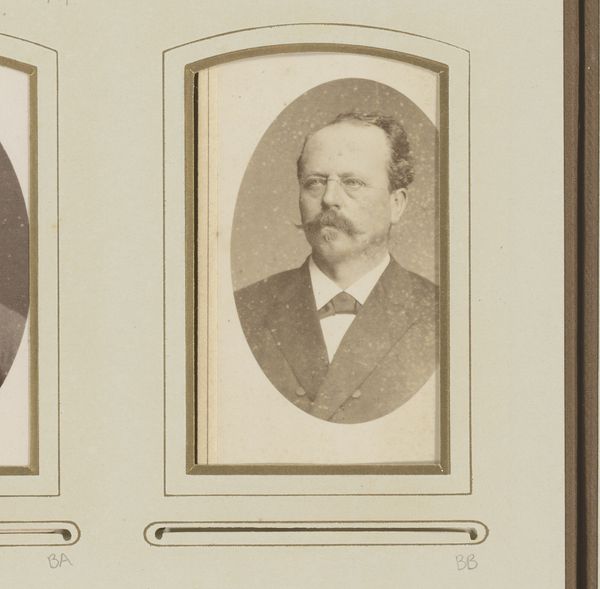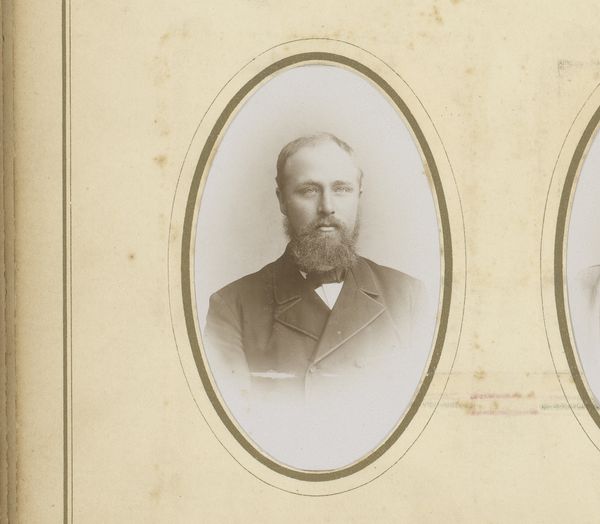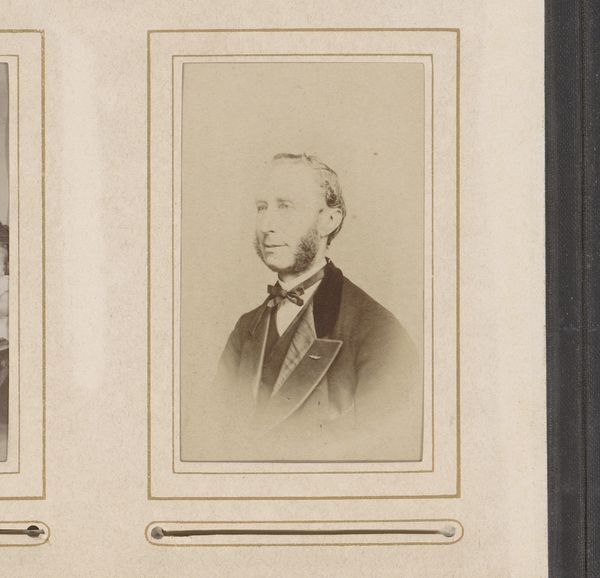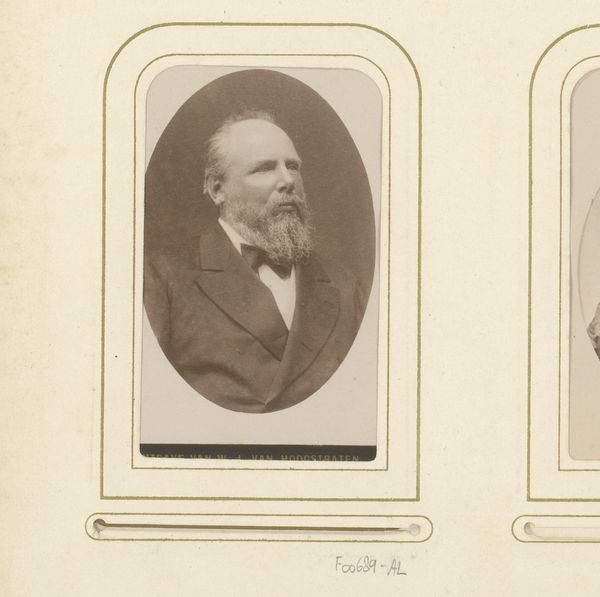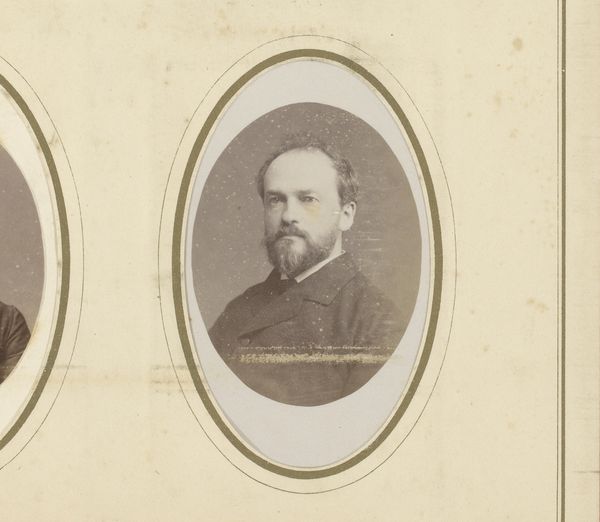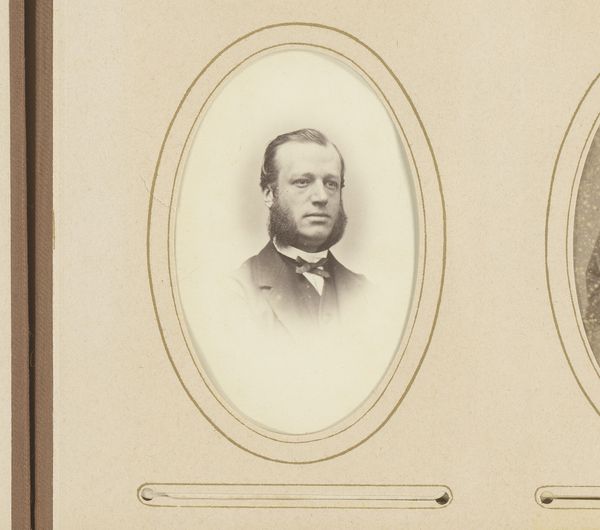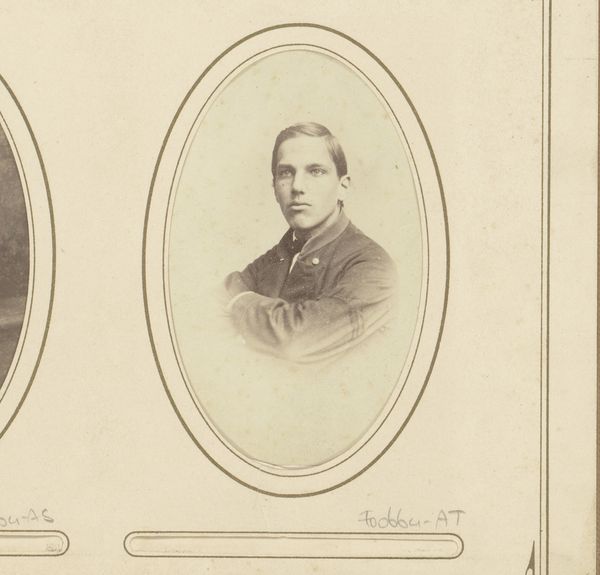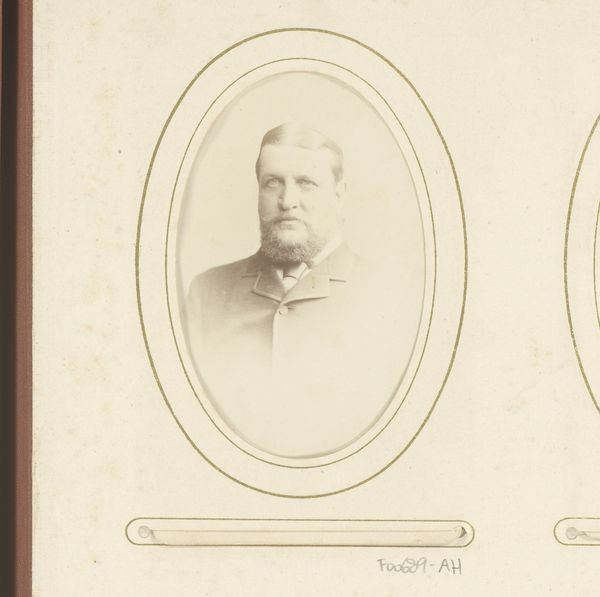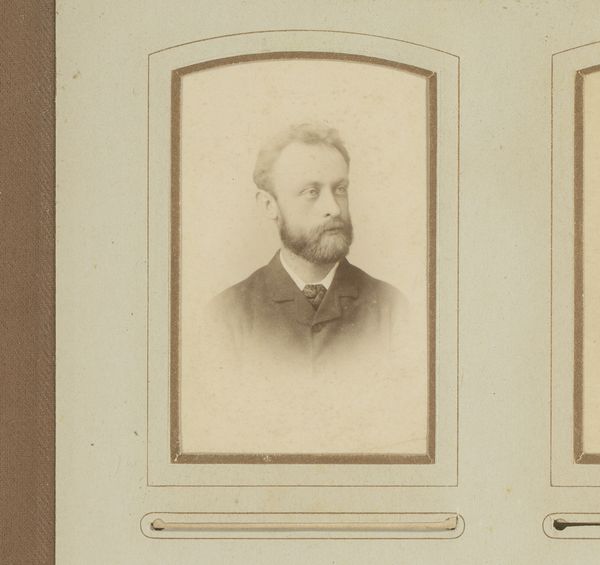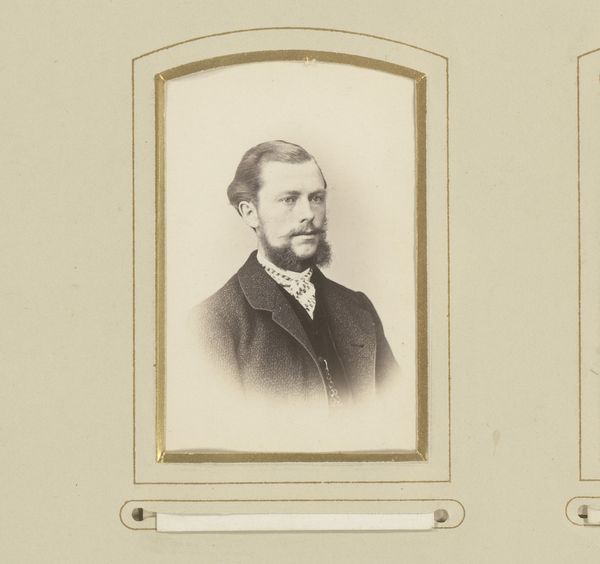
photography, gelatin-silver-print
#
portrait
#
photo of handprinted image
#
toned paper
#
photography
#
gelatin-silver-print
Dimensions: height 87 mm, width 53 mm
Copyright: Rijks Museum: Open Domain
Editor: Here we have "Portret van een man met baard," or "Portrait of a man with beard," created between 1875 and 1905. It is a gelatin-silver print. Looking at the slightly faded tones, it seems quite different from the high-resolution photography we see today. What can you tell me about it? Curator: It’s intriguing to consider this image not just as a representation, but as an object, shaped by particular social and technological forces. The gelatin-silver print, emerging in this period, was a product of specific industrial and chemical processes. What does it mean to have a portrait produced through such a mediated means? Editor: Mediated, how so? Curator: Think about the labour involved – from the preparation of the photographic materials to the act of printing. The ‘handprinted image’ AI tag is interesting; even within mechanical reproduction, there's a level of artisanal skill involved, differing from today's instant digital prints. Where would this image have been displayed, who had access to such technology? Editor: Good points! This would have likely been commissioned by someone with the means to do so. So, the materiality reflects class, doesn’t it? The process limits who is depicted and who has access to it. Curator: Exactly! We must always look at not just what is shown but HOW and WHY. That labour, those resources, affect who gets to be visible and how they’re seen. Do you think that changes how we understand portraiture in that era? Editor: Definitely. Considering the limitations of the medium and the processes needed highlights a very different perspective of art than paintings hung in museums. Thanks, this has opened my eyes to a whole new appreciation for the artistry involved. Curator: Indeed. By focusing on materials and the conditions of their production, we gain insight into how power and representation intertwine.
Comments
No comments
Be the first to comment and join the conversation on the ultimate creative platform.
